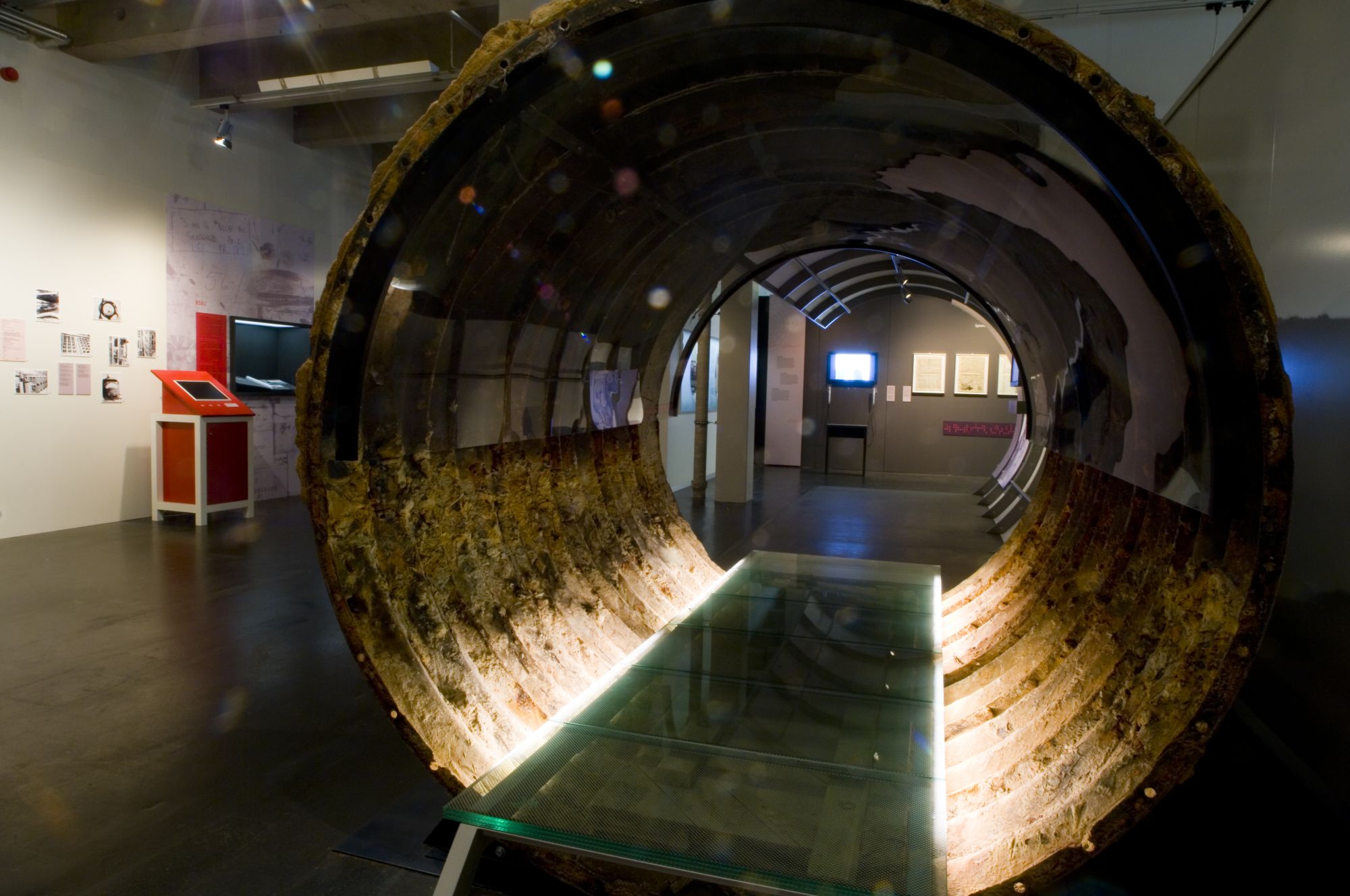The AlliiertenMuseum will be devoting a special exhibition to the history of the Berlin espionage tunnel on the occasion of its fiftieth anniversary.
Even today, the tunnel remains shrouded in myth and legend. Many of the documents relating to these events are still classified as ‘secret’. Thanks to years of research, the Museum is now able to present the first thorough account of what was probably a unique operation in the history of the western intelligence services. Apart from previously unpublished photographic and film material, visitors to the exhibition will also be able to see, and even enter, sections of the original tunnel. One of these sections of the tunnel is the last authentic piece, which the Museum was able to recover in 2005 in collaboration with the Berlin ministry for urban development. Since 1997, the Museum has owned another segment of the tunnel, which has been restored and is on display in the permanent exhibition..
Units of the Soviet army stationed in the GDR discovered the Berlin espionage tunnel in April 1956. It ran from Neukölln/Rudow in the American Sector to Treptow/Altglienike in the Soviet Sector. The tunnel was a joint operation of the American and British intelligence services. Its objective was to tap the telephone lines linking Soviet military headquarters with Moscow. The tunnel operated for 11 months before its spectacular discovery. Some 440,000 telephone calls were recorded during this period. The construction of the tunnel, which was approximately 450 metres long, and the bugging technology used, made the Berlin espionage tunnel an outstanding episode in the history of the Cold War. What rendered Operation Gold/Stopwatch particularly explosive was its betrayal to the Soviet secret service KGB by the British double agent George Blake before the action even began.

